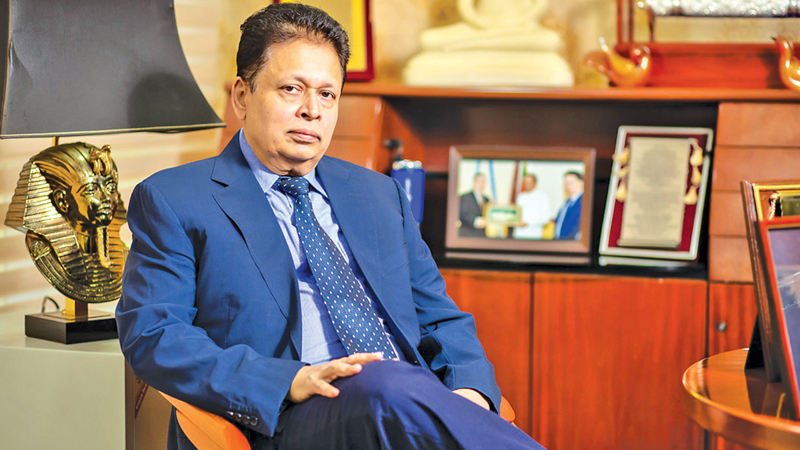- Transitions to the world’s largest grain exporter from a major grain importer
- Immense potential for Sri Lanka to diversify partnerships
- Right trade frameworks and agreements key to robust trade relations
A vibrant relationship between Sri Lanka and Russia will be a vital cog in Sri Lanka’s economy and in its journey to reach the global market for its niche products, said a former senior Sri Lankan diplomat to Russia.
“Our trade relationship with Russia has been historically strong, especially with Ceylon tea, which is still one of our flagship exports. But what’s exciting is how the relationship is evolving.
Over the past year, we’ve seen a significant increase in Russian tourists; in fact, they now rank second in visitor arrivals to Sri Lanka for the first five months of this year. That’s a major source of income for us and shows the growing people-to-people connection,” said Former Ambassador of Sri Lanka to the Russian Federation, General Secretary of the Sri Lanka-Russia Friendship Society and Chairman of the Centre of Russian Geographical Society in Colombo, Dr. Saman Weerasinghe.
On the import side he said, “We’ve increased our purchases of key commodities like coal and asbestos. There’s also major potential in petroleum imports from Russia, although geopolitical complexities have meant that we currently access those through third-party countries.
“Looking ahead, I see strong potential to diversify our partnerships, especially in sectors such as agro-tech, tourism, and renewable energy. If we can build the right trade frameworks and agreements, this could evolve into a very robust and future-facing trade relationship. There’s real momentum to push our current trade value of around USD 550 million toward the USD 1 billion mark,” Dr. Weerasinghe said.
How can bilateral trade be increased from USD 550 million to achieve the USD 1 billion target?
On expanding bilateral trade he said, “Reaching the USD 1 billion mark is definitely achievable, but it requires a focused effort. First, we need to diversify our exports beyond tea-there’s untapped potential in seafood, coconut-based products, spices, and even garments. These are sectors where Sri Lanka has the quality and the capacity?.
Investment in the energy sector is a key avenue for growth the former Ambassador said adding that Sri Lanka could explore renewable energy projects, such as wind and solar power, in collaboration with Russia. Vietnam recently signed a 1,000-megawatt wind power agreement, which could serve as a model for Sri Lanka. Additionally, bilateral meetings between Russian and Sri Lankan energy officials indicate progress toward future collaboration.
Efforts must also be made he said to translate policy discussions into practical projects. For instance, Sri Lanka has been deliberating on developing an atomic energy plant for over six years, yet despite a promising proposal from Russia’s ROSATOM, no action has been taken. “Another key area is skilled labour. Sri Lanka has a quota of 5,000 workers for the Russian market, especially in garments and services, but we’ve only utilized a very few out of the quota.
Strengthening labor mobility and creating structured partnerships would help us not just increase trade but also improve foreign income and create more job opportunities locally,” he said.
And of course, all of this needs strong policy support and investment facilitation mechanisms from both sides.
Elaborating on bilateral trade he said, “There are quite a few promising areas. Renewable energy is a big one. Sri Lanka is looking to move toward more sustainable energy solutions, and Russian companies can play a key role by investing in solar farms, wind power projects, or even hybrid energy solutions.
“Tourism is another win-win. With Russian tourist arrivals on the rise, there’s a strong case for investing in eco-resorts, wellness tourism, and hospitality training institutes. We’d love to see leading Russian hospitality brands setting up operations here, it would bring in quality infrastructure and create jobs. “Agriculture also presents huge potential. We could work together in processing and exporting Sri Lankan products such as coir, tea, and seafood with better value addition. Even joint ventures in agri-tech or smart farming could be mutually rewarding.
“Finally, Sri Lanka is moving toward a more digital economy. If we can attract Russian tech firms to set up operations here-particularly in software development or IT outsourcing, it would support our goal of becoming a digital hub for South Asia,” he said.
On lessons Sri Lanka can learn from Russia, Dr. Weerasinghe said, “Russia has shown us how a country can transform itself by focusing on diversification and innovation. Over the years, they’ve built a strong industrial base and started exporting more high-value products, not just raw materials. That’s something Sri Lanka can learn from. “Their approach to regional trade-building ties with emerging markets and strengthening local production- has made them more economically resilient. One of the most inspiring stories is how Russia turned from being a major grain importer to becoming the world’s largest grain exporter within a decade. “They did that through investment in agricultural technology, subsidies for farmers, and strategic expansion into global markets. For us in Sri Lanka, that’s a powerful example. If we modernise our agricultural practices and offer better support to farmers, we can reduce our dependency on imports and even become food exporters ourselves.
“Equally important is their emphasis on education and research. Investing in science, technology, and skilled human capital is what sustains long-term growth, and that’s a path Sri Lanka should definitely pursue,” he said.









